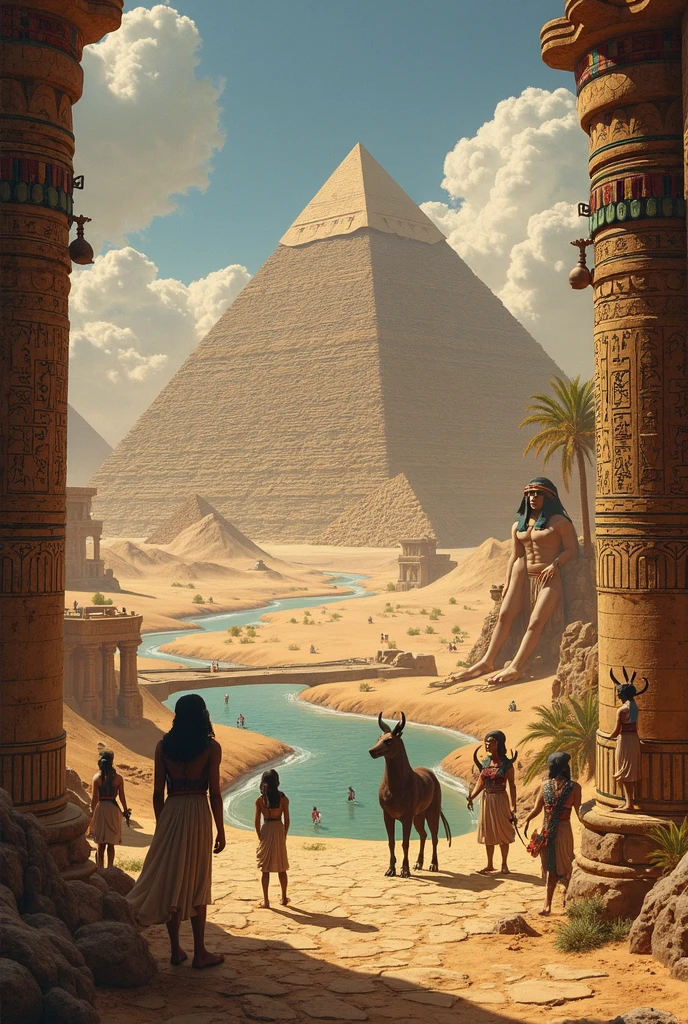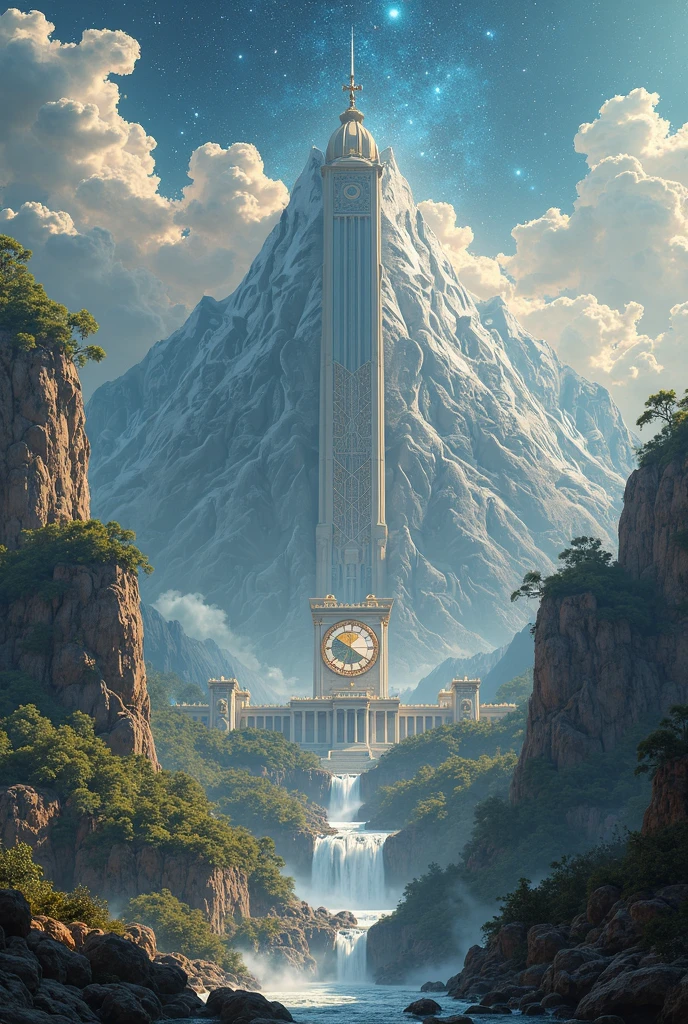Korean Mythology: The Legend of Dangun and the Birth of Gojoseon
Korean mythology is a rich tapestry of gods, spirits, and legendary figures that have shaped the cultural identity of Korea for millennia. At the heart of these myths lies the story of Dangun, the legendary founder of Gojoseon, Korea’s first kingdom. This tale intertwines divine intervention, shamanistic traditions, and the symbolic importance of animals like tigers and bears.
The Myth of Dangun: Korea’s Founding Father
According to Korean mythology, Dangun was the grandson of the heavenly god Hwanung, who descended to Earth to establish a just society. The legend states that Hwanung came down to Mount Baekdu with 3,000 followers, bringing with him the principles of governance, agriculture, and medicine. His son, Ungnyeo, was born from the union of a bear who transformed into a woman after enduring rigorous trials.
Key Elements of the Dangun Myth
- Hwanung’s Divine Descent: Represents the connection between heaven and Earth.
- The Bear and the Tiger: Symbolize perseverance and transformation.
- Shamanism: The myth reflects ancient Korean spiritual practices.
- Gojoseon Foundation: Marks the beginning of Korean civilization.
Hwanung: The Heavenly Ruler
Hwanung is a central figure in Korean mythology, often depicted as a benevolent deity who brought order to the human world. His governance over the earthly realm laid the foundation for Korean kingship and societal structure. The myth emphasizes his role as a bridge between the divine and mortal worlds, reinforcing the sacred nature of leadership in ancient Korea.
Hwanung’s Contributions to Humanity
| Contribution | Significance |
|---|---|
| Laws and Governance | Established the first legal and administrative systems. |
| Agriculture | Introduced farming techniques to ensure survival. |
| Medicine | Taught healing practices to combat diseases. |
The Role of Tigers and Bears in Korean Mythology
Animals play a crucial role in Korean myths, particularly tigers and bears. In the Dangun legend, a tiger and a bear prayed to Hwanung to become human. The bear succeeded by enduring 100 days of eating only mugwort and garlic, transforming into a woman who later gave birth to Dangun. The tiger, however, failed the test, symbolizing the importance of patience and perseverance.
Symbolism of Animals in Korean Myths
- Tigers: Represent strength but also impulsiveness.
- Bears: Symbolize endurance and maternal protection.
- Other Creatures: Birds, dragons, and foxes also appear in various myths.
Shamanism in Korean Mythology
Shamanism is deeply embedded in Korean mythology, with many legends reflecting shamanistic beliefs in spirits, nature worship, and rituals. The Dangun myth, for example, includes elements of transformation and communion with the divine, which are central to shamanistic practices. Even today, shamanistic rituals influence Korean culture, especially in rural areas.
Shamanistic Practices in Ancient Korea
| Practice | Purpose |
|---|---|
| Gut (Rituals) | To communicate with spirits and seek blessings. |
| Divination | To predict the future or diagnose illnesses. |
| Ancestor Worship | To honor deceased family members and seek their guidance. |
The Legacy of Gojoseon in Korean History
The foundation of Gojoseon by Dangun is more than just a myth—it represents the birth of Korean civilization. Archaeological evidence suggests that Gojoseon was a real kingdom that existed around 2333 BCE, though the exact details remain debated. The kingdom’s influence extended across the Korean Peninsula and laid the groundwork for subsequent dynasties.
Key Historical References to Gojoseon
- Samguk Yusa: A 13th-century text that records the Dangun legend.
- Archaeological Finds: Bronze artifacts linked to Gojoseon’s culture.
- Chinese Records: Early mentions of Gojoseon in historical documents.
Modern Interpretations of Korean Mythology
Today, Korean mythology continues to inspire literature, films, and cultural festivals. The story of Dangun is celebrated on National Foundation Day (Gaecheonjeol), reinforcing national identity. Additionally, themes from these myths appear in K-dramas and fantasy novels, introducing global audiences to Korea’s rich mythological heritage.
Popular Media Influenced by Korean Myths
- Dramas: Shows like “Arthdal Chronicles” draw from ancient myths.
- Literature: Modern retellings of Dangun and other legends.
- Festivals: Reenactments of shamanistic rituals and folk tales.
For further reading on Korean mythology, check out these resources: Encyclopedia Britannica, Korea.net, and World History Encyclopedia.
Descubre más artículos fascinantes sobre mitología y cultura en nuestra web y síguenos en facebook.com/zatiandrops.
Beyond the well-known tale of Dangun, Korean mythology brims with lesser-known deities, spirits, and legends that reveal the depth of Korea’s spiritual traditions. These stories often highlight the interconnectedness of nature, humanity, and the divine, offering unique insights into Korea’s ancient worldview.
The Tale of Jumong and the Founding of Goguryeo
Another foundational myth in Korean culture is the legend of Jumong, the founder of the Goguryeo Kingdom (37 BCE–668 CE). Born from the union of the river god Habaek and a mortal woman, Jumong was gifted with supernatural archery skills and leadership. His story mirrors themes of divine lineage and destiny, much like Dangun’s myth.
Key Aspects of the Jumong Legend
- Divine Archery: Jumong could shoot arrows with unerring precision, symbolizing protection and justice.
- Animal Companions: A magical horse and a loyal eagle aided him in his quests.
- Goguryeo’s Rise: His leadership established one of Korea’s most powerful ancient kingdoms.
The Underworld and the Afterlife in Korean Myths
Korean mythology includes intricate beliefs about the afterlife, governed by deities such as Yeomna, the King of the Underworld. Souls were judged based on their earthly deeds, with virtuous individuals rewarded and sinners punished. This belief system reflects Confucian and Buddhist influences blended with indigenous shamanistic traditions.
Deities of Death and Judgment
| Deity | Role |
|---|---|
| Yeomna | Rules the underworld and judges the dead. |
| Cheonha Daejanggun | A celestial general who escorts souls. |
| Jowangsin | The kitchen goddess who influences household fortunes. |
Mythical Creatures in Korean Folklore
Beyond tigers and bears, Korean myths feature a menagerie of supernatural beings. The Gumiho (nine-tailed fox), for instance, is a shapeshifting trickster that often appears as a beautiful woman to deceive humans. Meanwhile, the Dokkaebi (goblins) are mischievous spirits wielding magical clubs.
Notable Mythical Beings
- Gumiho: A fox spirit that gains power by consuming human livers.
- Dokkaebi: Playful but dangerous, known for granting wishes or curses.
- Imugi: Serpentine creatures that aspire to become dragons.
The Legend of Princess Bari: A Shamanic Heroine
One of Korea’s most poignant myths is the story of Princess Bari, an abandoned princess who embarks on a perilous journey to the underworld to retrieve the elixir of life for her dying parents. Her tale is central to Korean shamanic rituals, particularly the Bari Gongyang, a rite for the dead.
Themes in Princess Bari’s Story
| Theme | Significance |
|---|---|
| Filial Piety | Highlights Confucian values of loyalty to family. |
| Sacrifice | Bari endures trials to save her parents, embodying selflessness. |
| Shamanic Journey | Mirrors real-life shamanic voyages to the spirit world. |
Celestial Maidens and Star-Crossed Lovers
Korean mythology also includes romantic tales, such as the story of Gyeonhwon and Princess Nangnang, a celestial maiden who descended to Earth and married a mortal. Their love was doomed when she was forced to return to the heavens, leaving behind a heartbroken husband and children. This myth echoes themes found in global folklore, such as the Greek tale of Orpheus and Eurydice.
Romantic Myths in Korean Culture
- Chilseong (Seven Stars): A myth about star deities influencing human fate.
- Jiknyeo and Gyeonwu: The Korean equivalent of the Weaver Girl and Cowherd, celebrated during the Chilseok Festival.
Mythology’s Influence on Korean Festivals
Many Korean festivals have roots in ancient myths. For example, Dano, a traditional holiday, involves rituals to ward off evil spirits, while Chuseok (Korean Thanksgiving) honors ancestral spirits with offerings, reflecting mythological beliefs in the afterlife.
Festivals Linked to Myths
| Festival | Mythological Connection |
|---|---|
| Dano | Celebrates the triumph of good over evil, linked to shamanistic rites. |
| Seollal (Lunar New Year) | Ancestor worship and folk games tied to ancient legends. |
| Chilseok | Honors the celestial lovers Jiknyeo and Gyeonwu. |
Korean Mythology in Contemporary Culture
Modern Korea continues to draw from its mythological heritage. K-pop groups like BTS reference Dokkaebi in lyrics, while films such as “Along With the Gods” explore underworld mythology. Video games like “The Legend of Zelda” even incorporate Korean mythical elements.
Modern Adaptations of Myths
- Literature: Novels like “The Fox Girl” reimagine the Gumiho legend.
- Cinema: Movies such as “The Divine Fury” blend shamanism with action.
- Art: Traditional paintings of deities inspire contemporary artists.
For further reading on Korean mythology, check out these resources: Encyclopedia Britannica, Korea.net, and World History Encyclopedia.
Descubre más artículos fascinantes sobre mitología y cultura en nuestra web y síguenos en facebook.com/zatiandrops.
The Legend of the Sun and Moon: The Story of Haemosu and Yuhwa
One of Korea’s most captivating celestial myths tells of Haemosu, the sun god, and Yuhwa, the daughter of the river god. This myth explains the origins of the sun and moon while incorporating themes of forbidden love and divine punishment. According to legend, Yuhwa was kidnapped by Haemosu but later escaped, leading to her transformation into the moon while her brother became the sun.
Symbolic Elements in the Sun-Moon Myth
- Solar Chariot: Haemosu rode a golden chariot across the sky, representing the sun’s daily journey.
- Lunar Transformation: Yuhwa’s metamorphosis into the moon symbolizes purification and renewal.
- Sibling Rivalry: The myth explains why the moon appears more timid than the sun in Korean folklore.
The Mountain Spirits: Sanshin in Korean Mythology
Korean mythology features numerous nature deities, with Sanshin (mountain spirits) being among the most revered. These spirits are typically depicted as elderly men with long white beards, often accompanied by a tiger. Sanshin were believed to control the fertility of the land and protect travelers, with each mountain having its own unique spirit.
Characteristics of Sanshin Worship
| Aspect | Description |
|---|---|
| Appearance | Old sage with tiger companion, holding a staff of longevity |
| Sacred Sites | Sanshin-gak (spirit shrines) found on mountain paths |
| Modern Worship | Still honored in Buddhist temples and folk religion |
The Creation Myth of Mireuk and Seokga
In this lesser-known creation story, the gods Mireuk and Seokga compete to shape the world. Their cosmic contest involved creating plants, animals, and geographical features, with Mireuk generally portrayed as the benevolent creator and Seokga as the trickster figure. This myth reflects the dualistic nature of many Korean cosmologies.
Key Moments in the Creation Contest
- Flower Challenge: Mireuk created blooming flowers while Seokga made thorny weeds
- Animal Creation: Mireuk formed useful livestock while Seokga made pests and predators
- Final Test: The sunrise challenge that determined Mireuk’s victory
Water Deities and Flood Myths in Korean Tradition
Korean mythology contains several flood narratives featuring water deities like Yongwang, the dragon king of the sea. These stories often explain geographical formations and serve as morality tales about human arrogance toward nature. One prominent flood myth tells of a careless fisherman who angered the sea spirits, causing devastating tides until proper rituals were performed.
Types of Water Spirits in Korean Lore
| Spirit | Domain | Characteristics |
|---|---|---|
| Yongwang | Oceans | Dragon king who controls tides and storms |
| Gangsin | Rivers | Capricious spirits demanding annual offerings |
| Mul Gwishin | Lakes/Ponds | Ghosts of drowned victims who lure others |
The Mythological Origins of Korean Shamanic Tools
Traditional Korean shamanic implements like the jing (ritual bells) and bujeok (paper charms) have their own mythological backstories. According to legend, the first shamanic drum was created when a heavenly maiden descended to earth and stretched tiger skin over a sacred tree, with the resulting instrument gaining power to communicate with spirits.
Sacred Shamanic Objects and Their Legends
- Jing (Bell): Said to contain the voice of the wind spirit
- Bujeok (Charms): Believed to be fragments of the first shaman’s robe
- Mugunghwa: The mythical rose of Sharon that never fades
The Legend of the Three Clans: Mythological Origins of Korean Surnames
Many Korean family names trace their origins to mythological ancestors. The Samhan (Three Clans) myth tells how the progenitors of the Kim, Lee, and Park surnames descended from heavenly eggs found in golden chests. These stories often involve miraculous births and divine interventions that established Korea’s aristocratic lineages.
Mythical Ancestors of Major Korean Clans
| Clan | Mythical Origin | Sacred Animal |
|---|---|---|
| Gim (Kim) | Born from golden egg on Mount Gyeryong | Phoenix |
| Yi (Lee) | Emerging from silver egg in forest | White Tiger |
| Bak (Park) | Hatched from jade egg by riverside | Blue Dragon |
Mythological Explanations for Natural Phenomena
Korean folklore contains numerous etiological myths explaining natural occurrences. The phases of the moon were said to result from a rabbit pounding medicine in a celestial mortar, while earthquakes were attributed to the movements of a giant underground catfish. Thunder was believed to be the sound of heavenly dragons fighting, and rainbows were considered bridges for deities.
Nature Myths and Their Explanations
- Solar Eclipses: A celestial dog trying to devour the sun
- Aurora Borealis: Spirits dancing in the northern heavens
- Typhoons: The breath of angry sea dragons
For further reading on Korean mythology, check out these resources: Encyclopedia Britannica, Korea.net, and World History Encyclopedia.
Descubre más artículos fascinantes sobre mitología y cultura en nuestra web y síguenos en facebook.com/zatiandrops.


